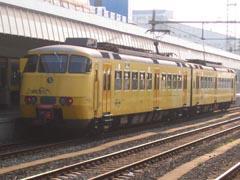
NETHERLANDS: An ambitious vision for a massive increase in traffic on the national rail network by 2020 was unveiled by Transport Minister Camiel Eurlings on September 3.
The government is projecting a 5% annual increase in rail patronage, as well as further growth in rail freight. HSL-Zuid and the Betuwe Route will provide extra capacity on some corridors, but a major programme of capacity enhancements will also be needed to accommodate additional trains elsewhere.
Earlier this year Eurlings said that the cabinet intended to increase financial support for rail investment to €4·5bn, with the aim of boosting the capacity of the rail network by 50% between now and 2020. The money is due to be allocated in this month’s national budget, but meanwhile the minister has released an initial €200m tranche to support a package of improvements; 29 measures which will absorb half the funding are already being progressed.
This comes on top of the funding previously announced for improving services between the northeastern provinces and the Randstad conurbation and the €60m allocated towards replacing the double-track viaduct through Delft by a four-track tunnel under the city.
Infrastructure manager ProRail, passenger train operator NS and the association of rail freight operators (BRG) issued their own proposals on September 5, in a strategy entitled Room on the Rails. This focuses on making optimum use of the network, and says the next step will be to determine how much work can be ?undertaken within the government’s €4·5bn budget.
Eurlings would like to see inter-city trains running at 10 min intervals on several routes by 2020. These would have to be accommodated without reducing the frequency of stopping services, which may themselves need to be stepped up to six trains/h. The faster acceleration of the new Sprinter EMUs now being delivered will help, but high-frequency operation is likely to require the construction of four-track sections and extra loop lines to allow the ICs to overtake the stopping trains, at a projected cost of around €1bn.
Three priority corridors have been identified where infrastructure constraints are likely to lead to saturation first: Utrecht – Arnhem – Nijmegen, Alkmaar – Utrecht – ’s Hertogenbosch – Eindhoven and Schiphol – Den Haag – Rotterdam – Eindhoven.
In the east of the country, ProRail is looking at what work would be needed to enable freight traffic currently using the single-track route between Zutphen and Hengelo to be diverted onto the longer double-track route via Deventer.

















